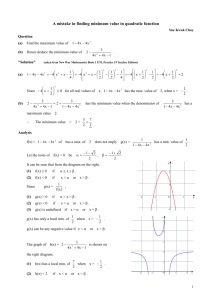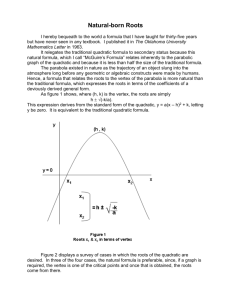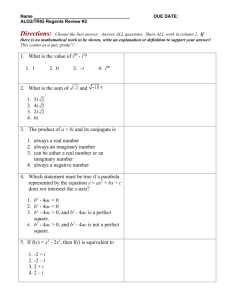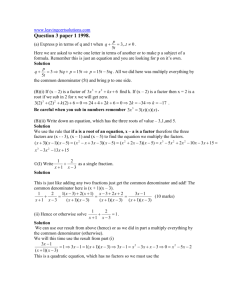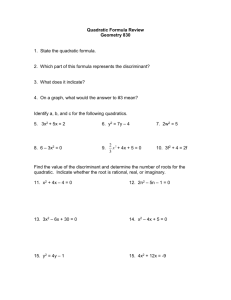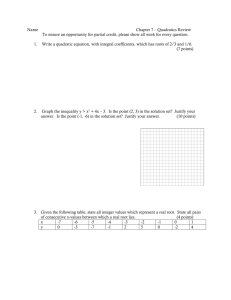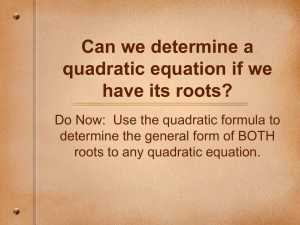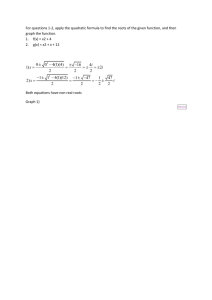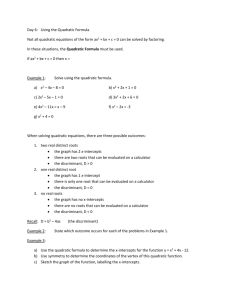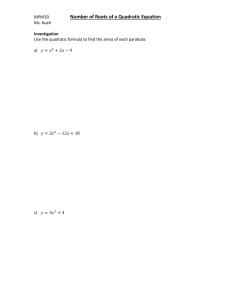Positive Roots of Quadratic Equations
advertisement
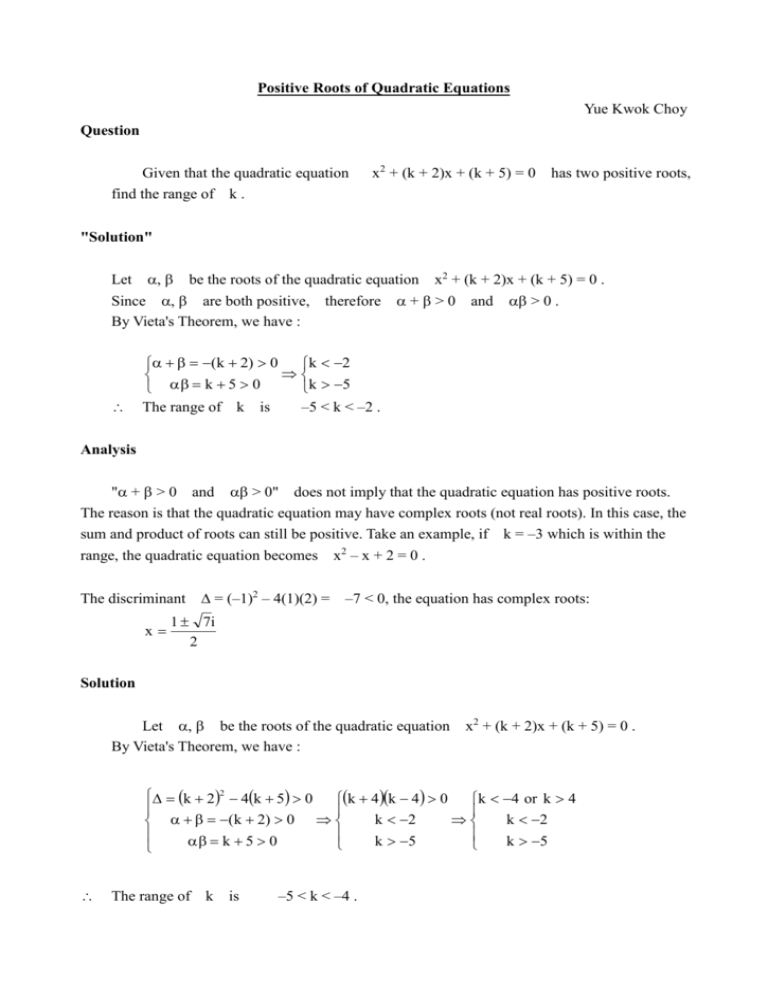
Positive Roots of Quadratic Equations Yue Kwok Choy Question Given that the quadratic equation find the range of k . x2 + (k + 2)x + (k + 5) = 0 has two positive roots, "Solution" Let , be the roots of the quadratic equation x2 + (k + 2)x + (k + 5) = 0 . Since , are both positive, therefore + > 0 and > 0 . By Vieta's Theorem, we have : (k 2) 0 k 2 k 5 0 k 5 The range of k is –5 < k < –2 . Analysis " + > 0 and > 0" does not imply that the quadratic equation has positive roots. The reason is that the quadratic equation may have complex roots (not real roots). In this case, the sum and product of roots can still be positive. Take an example, if k = –3 which is within the range, the quadratic equation becomes x2 – x + 2 = 0 . The discriminant x = (–1)2 – 4(1)(2) = –7 < 0, the equation has complex roots: 1 7i 2 Solution Let , be the roots of the quadratic equation By Vieta's Theorem, we have : x2 + (k + 2)x + (k + 5) = 0 . k 22 4k 5 0 k 4k 4 0 k 4 or k 4 k 2 k 2 (k 2) 0 k 5 0 k 5 k 5 The range of k is –5 < k < –4 . Lessons Given , be the roots of the quadratic equation : ax2 + bx + c = 0 (*) , a 0, a, b, c are real numbers. 1. b 2 4ac 0 b (*) has positive roots 0 a c 0 a 2. b 2 4ac 0 b (*) has negative roots 0 a c 0 a 3. (*) has exactly one zero root b 0 c 0 4. (*) has two zero roots b 0 c 0 5. (*) has one positive root and one negative root b 2 4ac 0 c 0 a
